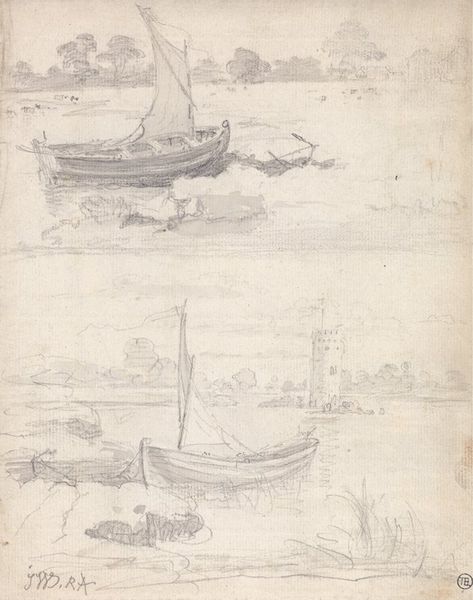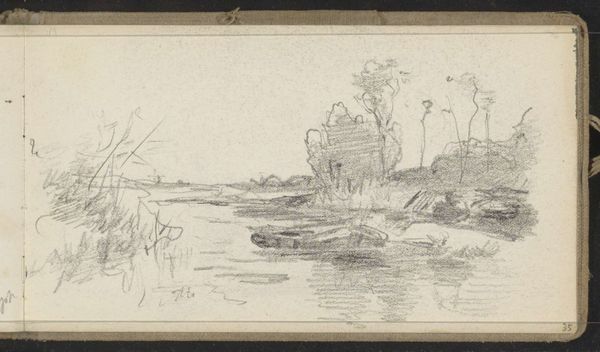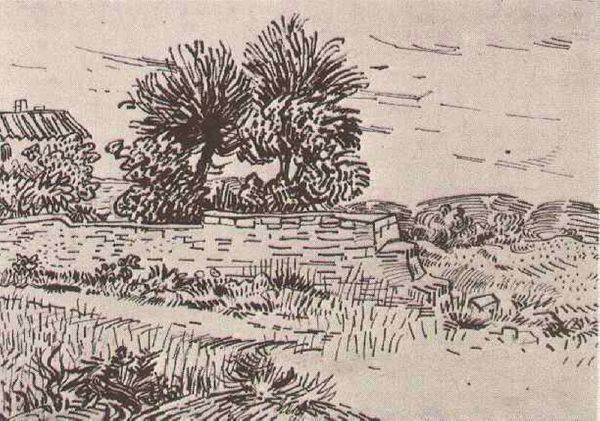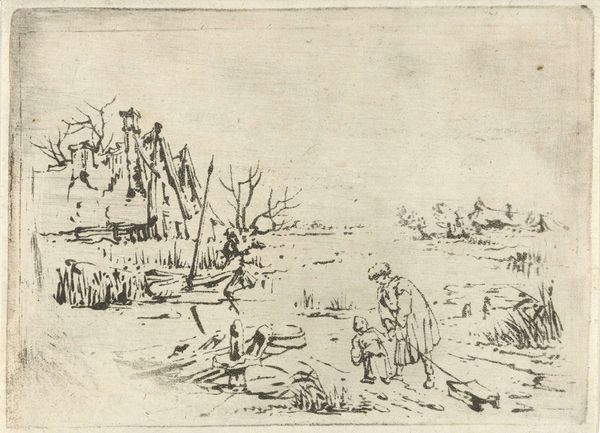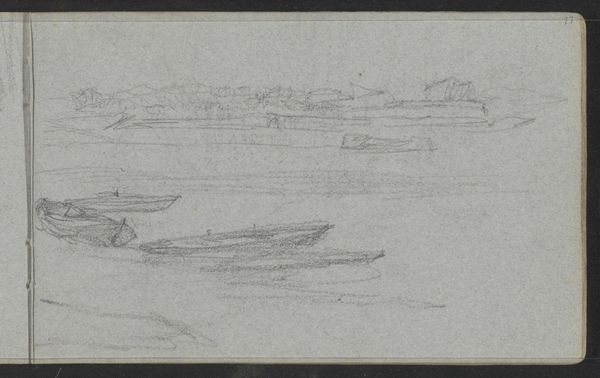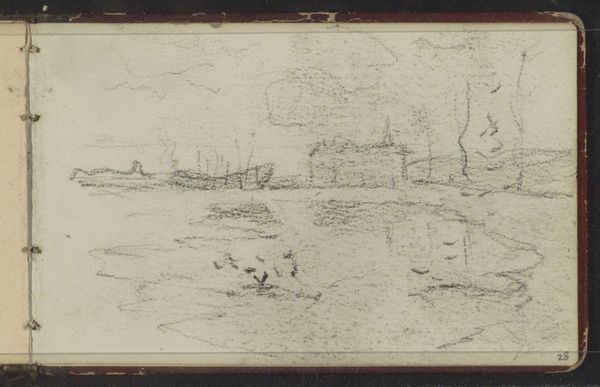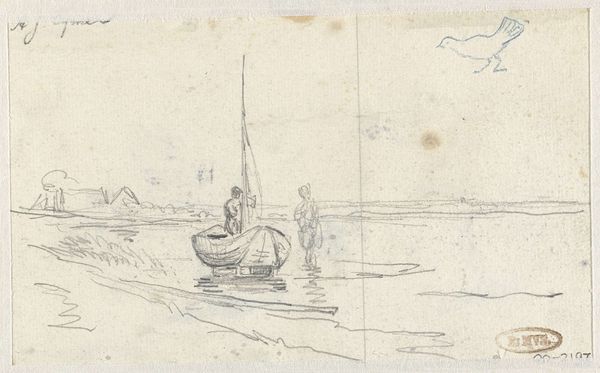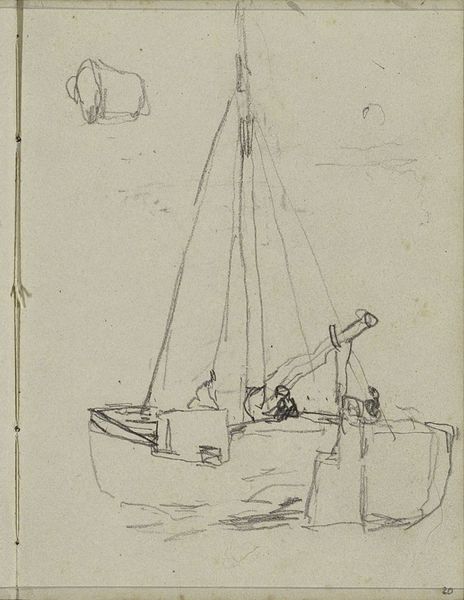
drawing, ink, pen
#
drawing
#
dutch-golden-age
#
pencil sketch
#
landscape
#
ink
#
pen-ink sketch
#
pen
#
genre-painting
Copyright: Public domain
Curator: Let's delve into Hendrick Avercamp's "Boats with a Washing Woman," created around 1634. The artwork, crafted with pen and ink, provides a glimpse into 17th-century Dutch life. Editor: It's deceptively simple, isn't it? The pale ink gives the scene a hazy quality. But what strikes me first is the quiet labor of it all – the boats, the figures busy at work... it speaks of the daily toil. Curator: Indeed. Avercamp frequently depicted such scenes, placing everyday people within the landscapes of the Dutch Golden Age. It's interesting to examine how the social hierarchy plays out. The presence of boats signifies commerce, yet our attention is drawn to the washing woman, highlighting the domestic labor force, frequently female, that sustains it. Editor: I see that too. Look at the materiality, though: pen and ink. It emphasizes the drawing as a method of observation, of recording details. It is interesting, how accessible and economic these means of representation really are. How do the resources affect what is able to be seen and circulated, do you think? Curator: A potent question. There’s an intimacy afforded by its small scale and understated execution. I wonder about accessibility on the part of the viewer—was Avercamp’s art available to everyone, or mainly viewed by those with access and a specific socioeconomic positioning? Consider also gender - Were the narratives circulating about working-class women during that period defined by women themselves? Editor: Good points. The labor that constructed these narratives has weight, I imagine, even across class divides. It does provoke reflection on how those with means interpret working life; whose version is represented here? And considering that context of Dutch commerce, it’s interesting to ask what material benefits might accrue to whom based on whose labor. Curator: Ultimately, the charm of this humble pen and ink drawing opens many doors through which we can explore broader social, political and economic questions, especially relating to women. Editor: Exactly. It reminds us that art isn't just about aesthetics, but a conduit to thinking about labor and how materiality connects to daily lives.
Comments
No comments
Be the first to comment and join the conversation on the ultimate creative platform.
